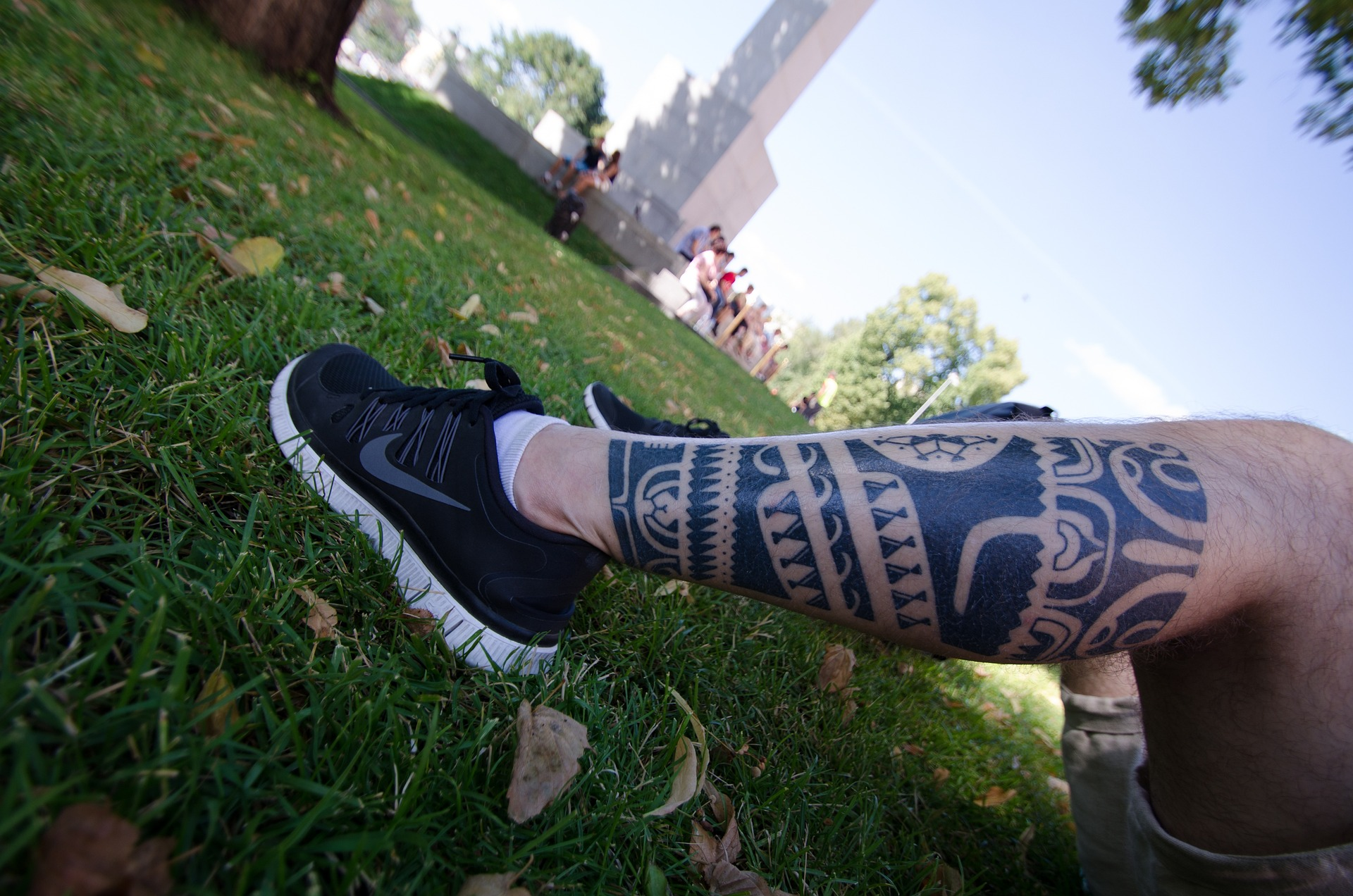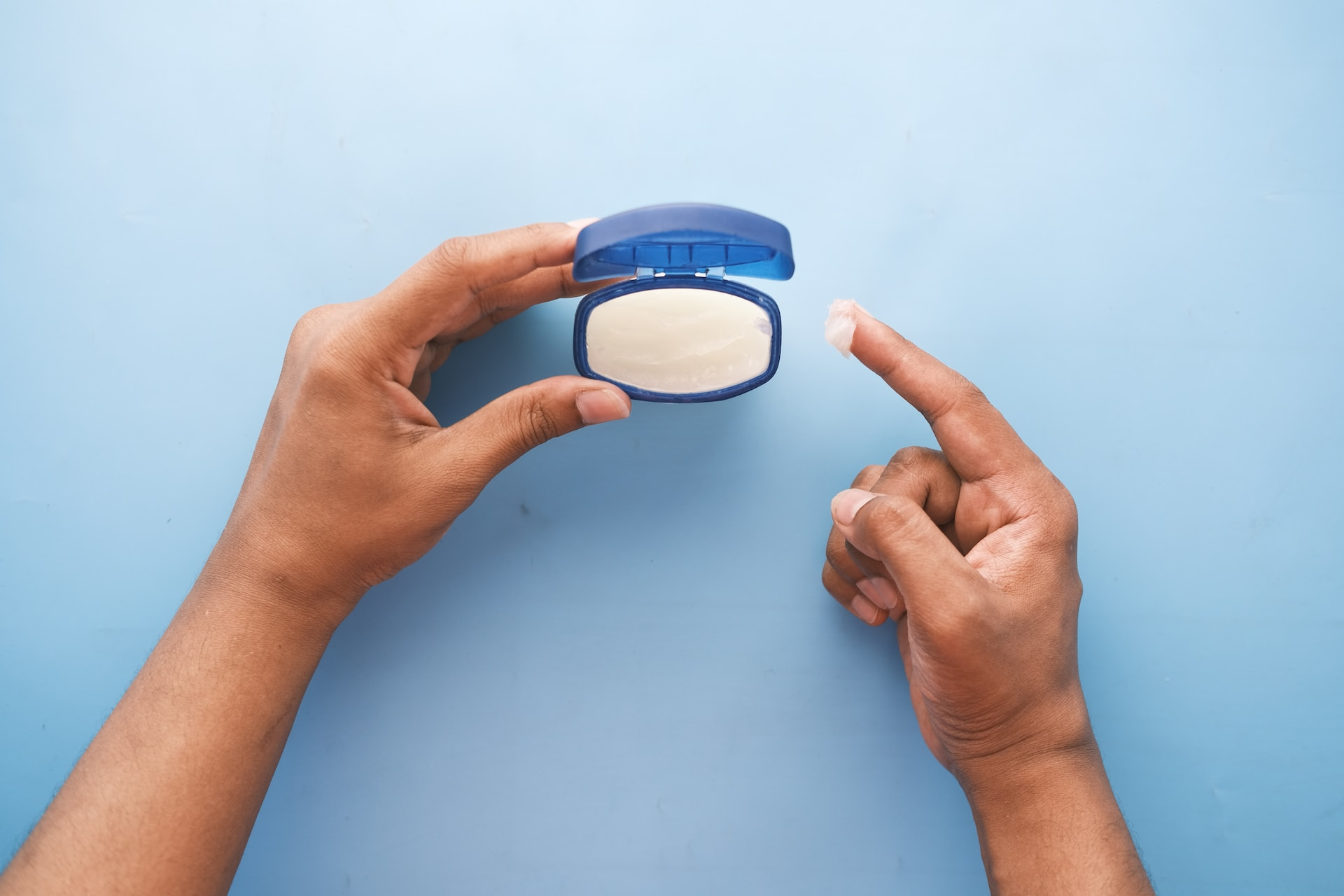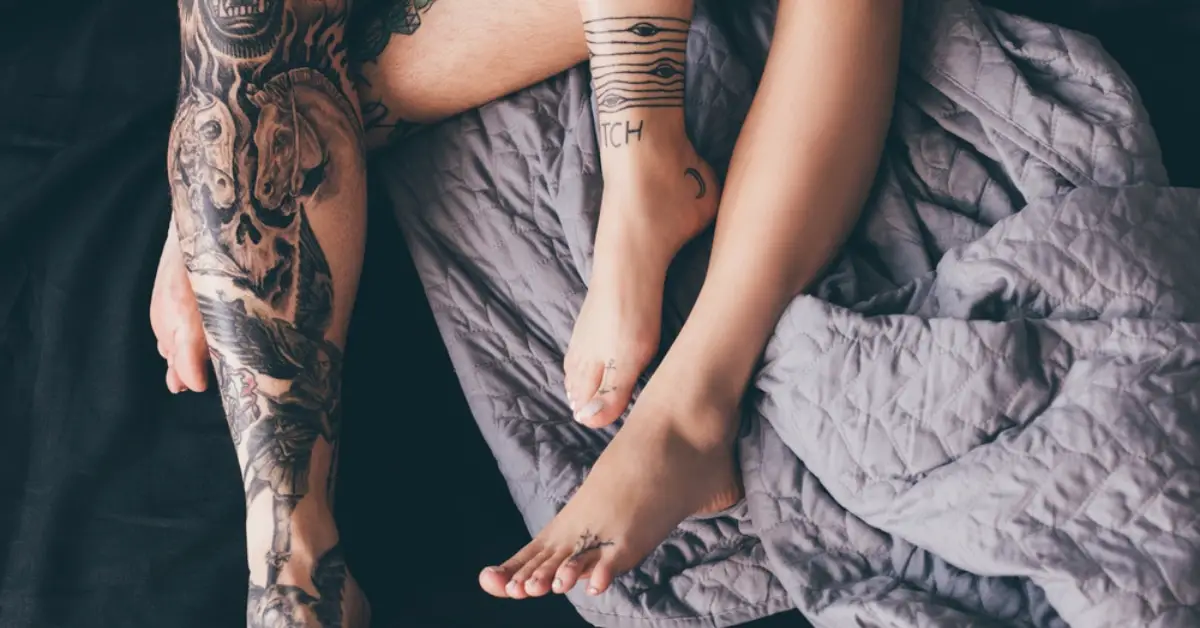Are you thinking about getting inked? Is it your first tattoo? Wondering about pain like, will shin tattoos hurt?
Let’s talk about the real deal- the pain factor! Especially when it comes to getting a shin tattoo. The shin is a super bony area with loads of nerve endings and not much cushioning fat, which means it can amp up the pain factor during a tattoo sesh compared to other body parts.
So, if you’re considering getting some fresh ink on your shin, just be prepared for a potentially more intense experience, okay?
Now, let’s find out what you are in for

Shin tattoos are notorious for being one of the most painful regions of the body to tattoo. Most of this pain comes from the shin bone right under the skin, with little fat or muscle to soften the feeling. Also, the shin area is complex and sensitive, making getting a tattoo more painful than other body parts.
Getting inked is an absolute roller-coaster ride of emotions, and it’s not all rainbows and unicorns. One of the hurdles we face is the pain factor. Yep, it’s no secret that tattoos can sting a bit! We’re about to explore all the juicy deets about the pain that comes with them, understand what factors can influence it, and uncover some super effective ways to manage and minimize that discomfort.
Additionally, we will provide aftercare tips to ensure the healing process goes smoothly and your new shin tattoo looks its best. By understanding the pain levels and proper care, you can confidently embark on this artistic journey and proudly show off your new ink.
Why do Shin Tattoos hurt?
Let’s talk about this excruciating pain causing major drama in different parts of our body. And guess what? The shin is stealing the spotlight as one of the most notorious culprits. Understanding the intricate details of why shin tattoos can be so painful is crucial for anyone considering this epic journey.
If you’re as obsessed with tattoos as I am or simply intrigued by the mesmerizing world of body art, then you’re in for a treat! Join me on this incredible journey as we discuss the captivating realm of tattoo pain. Get ready to gain some precious insights.

1. Skin Thickness
Did you know that the skin on our shins is usually thinner than the skin on other parts of our incredible bodies? That’s right! The skin on the shin is often thinner than on the rest of the body.
The thickness of a person’s skin can change, but the shin generally has less subcutaneous fat and muscle than the upper arm or thigh. Because the skin is so thin, the tattoo tools are closer to the bone, which causes severe pain
2. Bone Proximity
The proximity of the shin bone, commonly known as the tibia, is one of the defining features of the shin area. The tibia is one of the long bones in the body. It is right under the skin in the area of the shin.
This area has little natural padding between the skin and bone, unlike places with more muscle or fat. Because of this, the tattoo needle either touches the bone directly or is very close to it while getting a tattoo.
Because the tattoo needles are so close to the bone, the pain worsens when they touch the hard surface below.

3. Nerve Endings
The shin area is filled with nerve endings necessary for transmitting sensory information to the brain, including pain.
The pain sensation can be particularly severe and intense when the tattoo needles enter the skin and trigger these nerve endings. This differs with spots with fewer nerve endings, where pain may be less severe.

4. Sensitivity
Most people think the area around the shin is more sensitive than other body parts. This sensitivity can be affected by genetics and how much soreness a person can handle. Some people may be able to handle the feeling better than others, while others may find it extremely painful.
5. Skin Stretching
Stretching the skin makes a smooth surface for the gentle artist to work on. Getting a tattoo on the shin, where the skin is pulled tight over the bone, can worsen the pain. It’s similar to stretching a tight rubber band across a hard surface, which can be uncomfortable.

6. Duration of the Tattoo Session
The length of the tattoo process is a big part of how painful the whole thing is. Shin tattoos typically take longer to complete, especially if they are elaborate or cover a large shin area. Longer sessions may cause additional discomfort when the body’s pain sensations get tired.
Even though these things make shin tattoos more scary and painful, if you want a beautiful tattoo on your leg, as discussed in the last section, you can take steps to prepare for and deal with the pain.
By learning these things beforehand, you can make better decisions about the tattoos you want to get and have a more comfortable and satisfying tattoo experience.
Anatomical factors, including skin thickness, nerve endings, and bone structure, influence the shin tattoo pain you may experience. Your individual pain tolerance also contributes to the discomfort experienced during tattooing.
By considering these factors and implementing pain reduction strategies, you can make your shin tattoo experience more bearable.
How can You Tolerate Tattoo Pain Better?
Not to mention, Pain is a big reason why people are afraid of getting tattoos. It is a common misperception that tattoos are extremely painful. But don’t worry, tattoo fans! I’ll tell you how to overcome this fear in the next part. You can get the tattoo you’ve always wanted by taking a few easy steps.
Getting a tattoo on your shin can hurt more or less depending on your chosen pattern.

- Simple Designs: It usually takes longer to tattoo an elaborate or intricate design. Longer sessions could worsen the pain. Because of this, Choose a simple, small design instead of a complicated one that might make you feel more uncomfortable.
- Fine Details: Fine details in colors and patterns will take longer, resulting in a long tattoo session. If you are sensitive to pain, I strongly suggest getting a simple tattoo because a tattoo expert must work more slowly and carefully on a complex one.
- Tattoo Artist’s Skill: A good tattoo artist can make the process easier and less painful.
- Your Tolerance: A person’s pain tolerance is a personal factor that affects how much pain they feel when getting a tattoo. Individuals with a high pain tolerance may be able to tolerate more intricate designs for longer periods. Those with weaker pain tolerances may prefer simpler and faster tattoos.
- Stay Relaxed: Practice deep breathing and stay relaxed during the session.
- Take Breaks: If the discomfort gets unbearable, do not hesitate to request short breaks.
- Listen to Music: Music or distractions can help take your mind off the pain.
Tattoos are the vibrant backdrop to our existence. Everyone has a unique journey and mental process after getting a tattoo as a reminder. With this kind of intense emotion comes pain.
Well, if you think about the things we’ve discussed, you’ll be able to make a better choice and, most importantly, save time and money. Everyone feels pain during the tattoo process, but with a few tips, you can manage the pain.
Let’s move on to the next part about ways to relieve pain.
What is the Best Tattoo Pain Reliever?
When it comes to finding the ultimate tattoo pain reliever, it’s all about personal preferences and the guidance of your amazing tattoo expert. These tried-and-true methods will make you feel like a total boss during your tattoo sesh!
So, without further ado, here they are:

1. Numbing Creams/Gels
- Numbing creams or gels are applied topically to the skin before the tattooing session.
- They contain local anesthetics like lidocaine or benzocaine, which temporarily numb the skin.
- Numbing creams can help reduce pain during the tattoo session, making it more bearable.
- It’s essential to follow the instructions provided by the cream’s manufacturer or your tattoo artist to ensure safety and effectiveness.
2. Pain Relief Medication
- Over-the-counter pain relievers like ibuprofen or acetaminophen can help manage tattoo pain.
- It’s crucial to consult with your tattoo artist and a healthcare professional before taking any medication to ensure it’s safe for you.
3. Oral Topical Anesthetics
- Some tattoo artists may recommend oral topical anesthetics, which are taken in pill form before the tattooing.
- These anesthetics can provide more widespread pain relief but should be used cautiously and under professional guidance.
4. Pain-Relief Patches
- Pain-relief patches, like those containing lidocaine, can be applied to the skin before the tattoo.
- These patches slowly release the numbing agent, providing continuous pain relief during the session.
5. Hydration and Rest
Staying well-hydrated and getting a good night’s sleep before your tattoo appointment can help your body better cope with pain.
The best pain reliever for your tattoo largely depends on your pain tolerance, the advice of your tattoo artist, and any pre-existing medical conditions or allergies you may have. Always communicate openly with your tattoo artist, and consider seeking advice from a healthcare professional if you have concerns about pain relief options. Remember that while pain relief methods can help, discomfort is a natural part of tattooing.

How Long Does it Take to Heal a Shin Tattoo?
The healing time for a shin tattoo, like any tattoo, can vary from person to person and depends on various factors, including the size and complexity of the tattoo, your overall health, and how well you follow aftercare instructions. However, here’s a general timeline to give you an idea of what to expect:
1. Initial Healing (Days 1-2)
In the first couple of days after getting a shin tattoo, you’ll likely experience some redness, swelling, and tenderness in the tattooed area. The tattoo may also ooze a clear or slightly colored fluid. This is a natural part of the healing process, as your body repairs the skin.
2. Peeling and Scabbing (Days 3-7)
The tattooed area may start to peel and form scabs. It’s crucial not to pick at these scabs, as doing so can damage the tattoo and slow the healing process.
3. Settling In (Weeks 1-2)
The tattoo should settle in by the end of the first and second weeks. The peeling and scabbing will diminish, and the colors will begin to stabilize.
4. Complete Healing (Weeks 2-4)
It generally takes about 2 to 4 weeks for the outer layers of the skin to heal fully. During this time, your tattoo will go through various stages of healing, and you’ll notice that the colors become more vibrant and the details sharper.

5. Final Results (Months 2-6)
While the outer layers of skin heal relatively quickly, it can take several months for the deeper layers of skin to recover fully and for the tattoo to reach its final appearance. Protecting your tattoo from direct sunlight is essential during this time, as UV rays can fade the ink.
Remember that proper aftercare is crucial for a successful and timely healing process. Your tattoo artist will provide you with specific aftercare instructions, which typically include keeping the tattoo clean, applying a recommended ointment or moisturizer, avoiding sun exposure and swimming pools, and refraining from picking at scabs or wearing tight clothing that may rub against the tattoo.
Suppose you have concerns about the healing of your shin tattoo or notice any signs of infection, such as excessive redness, swelling, pus, or increasing pain. In that case, you must consult your tattoo artist or a healthcare professional promptly.

Final Thoughts
It’s no secret that shin tattoos can be a bit painful, but trust me, the result is worth it. Now, you know the major factors causing this pain; first, we’ve got the super proximity of the skin to the bone. Like, seriously, they’re practically neighbors! Then, we’ve got the lack of muscle and fat padding in the mix, which is not cool at all. And last but not least, we’ve got a bunch of nerve endings in the area, making it extra sensitive. So yeah, these factors are totally playing a role in this pain situation. Stay strong, peeps!
Go for a chic and minimalist design to maximize comfort levels.
If you’re gearing up for an appointment and want to stay on top of your pain management game, I have a little tip! Why not consider popping an over-the-counter painkiller before your visit? It’s a simple yet effective way to keep those pesky pains at bay and ensure you feel your absolute best during your appointment!
So, let’s ensure we’re taking care of that shin tattoo like the true BOSS we are!

